9 DIY Watering Globe Plans You Can Make Today (With Pictures)
-

- Last updated:
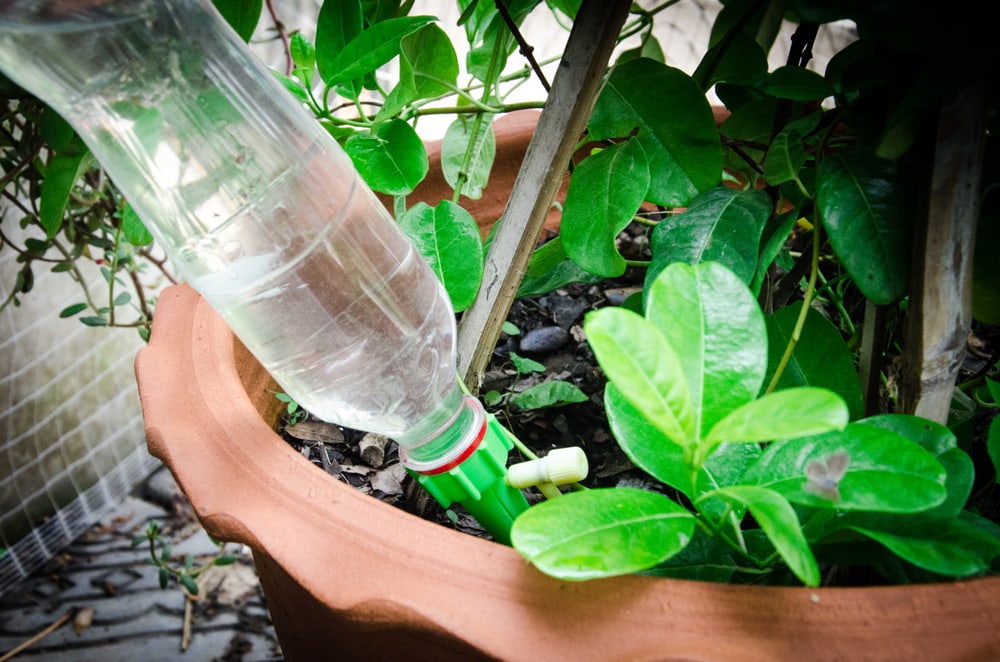
Watering globes are beautiful and convenient. They allow you to water your plants consistently without having to lug around a water jug every day. Despite how convenient watering globes are, they aren’t always great for your budget.
Because most watering globes sold at the store are made from blown glass, these objects can get pricey fast. The good news is that the technology behind watering globes does not require a lot of skill. In fact, you can make DIY watering globes out of recycled materials you find around your home.
Here are a few great DIY watering globe plans that you can make today:
The 9 DIY Watering Globe Plans
1. Den Garden’s Recycled Plant Watering Globe by Den Garden
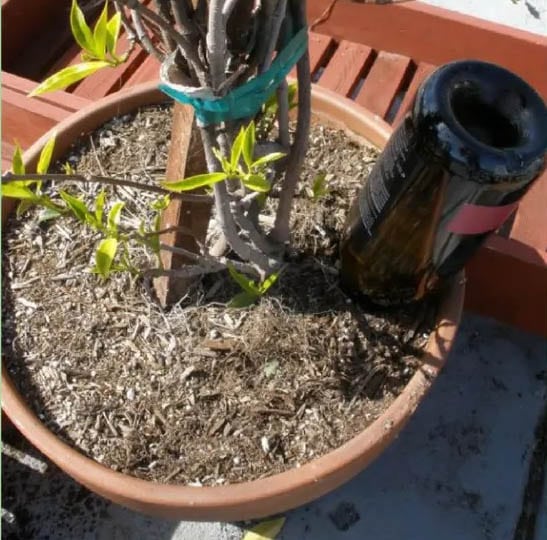
| Materials: | Plastic: Bottle with lid Glass: Cork, glass bottle |
| Tools: | Plastic: Nail, candle, match/lighter Glass: Nail, hammer, duct tape |
| Difficulty: | Beginner |
Den Garden offers a ton of plans and resources for making the most of your home garden. This recycled plant watering globe is awesome because you can turn any plastic or glass bottle into a watering globe.
The instructions are thorough and easy to follow. The instructions include steps for turning a plastic bottle into a watering globe, as well as turning a glass bottle into a watering globe. For both categories, materials and instructions are clear.
We like the fact that this plan offers a plastic and glass bottle option because it allows you some choices. The plastic bottle option is the easiest and most convenient, but the glass bottle option is the most attractive. Select whichever is right for you.
2. Hunker’s Self-Watering Plant Spikes by Den Garden
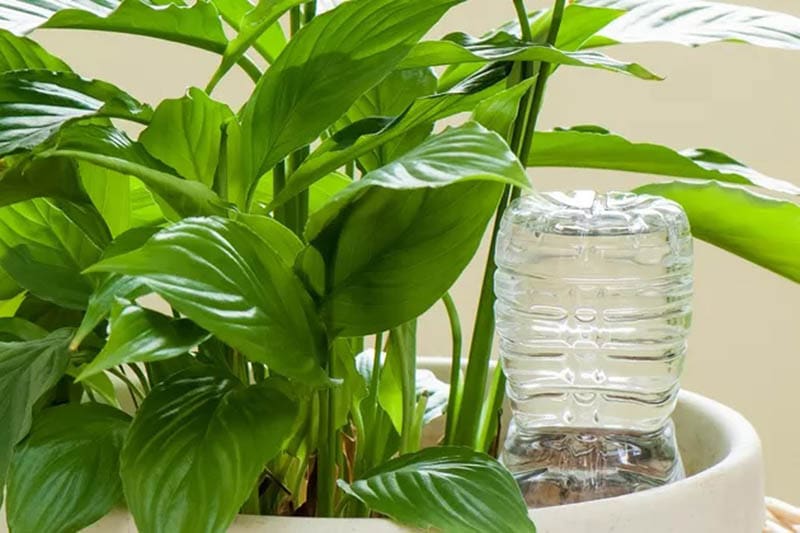
| Materials | Bleach, plastic bottle with cap |
| Tools | Measuring cup, drill, drill bit |
| Difficulty | Beginner |
Hunker provides another self-watering plant globe idea. This plan is very similar to the above-mentioned plastic bottle plan. The only difference is that this article is much more thorough on how to turn a plastic bottle into a fully functioning water spike specifically.
This plan includes everything you may need, including a list of materials, thorough steps, tips, and tidbits. It also answers some frequently asked questions to ensure all of your questions are answered before getting started.
3. Cynepnynep’s Country Tricks by Ya Super Puper

| Materials | Plastic bottle, spike lids |
| Tools | Scissors or knife |
| Difficulty | Intermediate |
The last plan to try is this Country Tricks page. Before you click the link, realize that the website is in Russian, but Google will translate it for you. Unfortunately, this plan does not give you written instructions, but there are pictures that you can follow to ensure you do everything correctly.
In short, you will need a plastic water bottle. You will also need to purchase some spikes that can screw on top of your water bottle and pierce into the ground.
This plan is very similar to the other plastic bottle options we’ve looked at so far, but the instructions aren’t as thorough.
4. Simple DIY Beer Bottle Watering Globe by Red-Handled Scissors
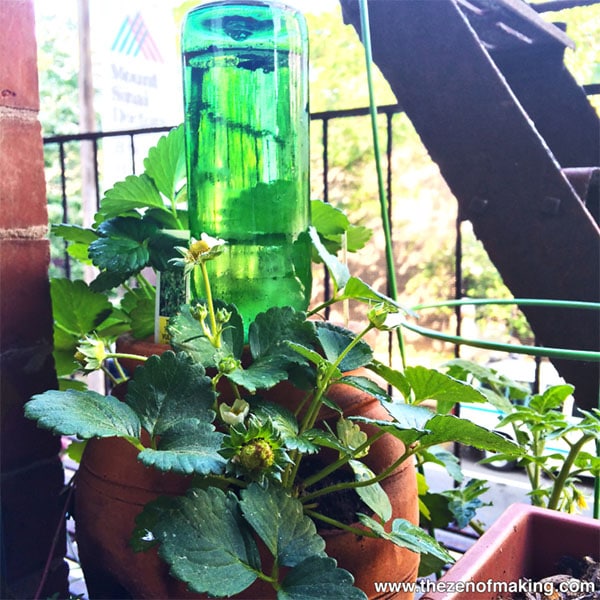
| Materials: | Empty beer bottle, water |
| Tools: | Small shovel |
| Difficulty Level: | Easy |
If you drink beer or know someone who does, you can easily and quickly turn a beer bottle into a free DIY watering globe. The instructions from Red-Handed Scissors make it even easier. All you need is an empty beer bottle, a small shovel or spade, and a couple of minutes. Even better, you can use multiple beer bottles on multiple plants all over your home. These DIY watering globes won’t cost a thing, and you’ll be repurposing bottles instead of adding them to the trash pile in your town. That’s a win-win for you and your plants!
5. Easy and Cheap DIY Vacation Plant Watering Globe by Do It Smart DIY
| Materials: | 2.5-inch diameter plant pot, small used bottles (plastic or glass) |
| Tools: | Hot glue gun with glue sticks |
| Difficulty Level: | Easy |
These DIY plans will help you create an ingenious watering globe to water your plants while you’re on vacation. The maker, Do It Smart DIY, shows you how on their excellent YouTube video. You’ll need a small terracotta clay pot without a drainage hole (or you need to plug the hole). With a bottle, which can be plastic or glass, capillary action takes care of the rest! Just insert the bottle into the pot, and you’re done. Your plants will be all set for water until you return! For bigger plants, use a bigger bottle for more water.
6. Coke Bottle DIY Watering Globes by Rad Megan

| Materials: | Empty beer bottle, water |
| Tools: | Small shovel |
| Difficulty Level: | Easy |
These free DIY watering globe plans are very similar to the beer bottle watering globe on our list. The difference, of course, is they’re made using empty bottles from one of America’s favorite beverages, Coca-Cola, and have that iconic shape everyone loves! As before, you only need a small shovel and an empty, clean Coke bottle. Watering your plant(s) before inserting the filled bottle works best and creates a better seal. In mere minutes you’ll have an attractive and colorful plant-watering globe that won’t cost you a dime!
7. DIY Light Bulb Watering Globe by Askix
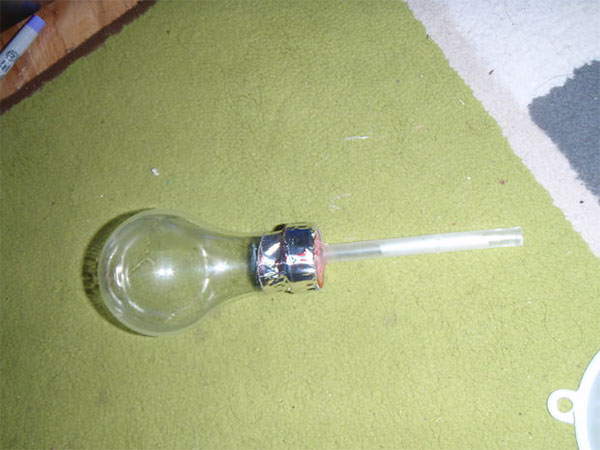
| Materials: | Cap from a soda bottle, plastic Bic pen, light bulb (fluorescent), salt |
| Tools: | Electric tape, hot glue gun and glue stick, scissors |
| Difficulty Level: | Moderate |
It’s a good bet you’ve never seen a DIY watering globe made from a used light bulb! Now you can build one of your own with these plans from Askix. If we’re being honest, making this looks slightly risky. Light bulbs aren’t known for being durable, after all. However, the results are truly unique and attractive to see. The instructions are easy to follow and empower you to recycle your old light bulbs and empty Bic pens! What a brilliant idea!
8. Simple Plastic Bottle DIY Watering Globe by Simple & Seasonal
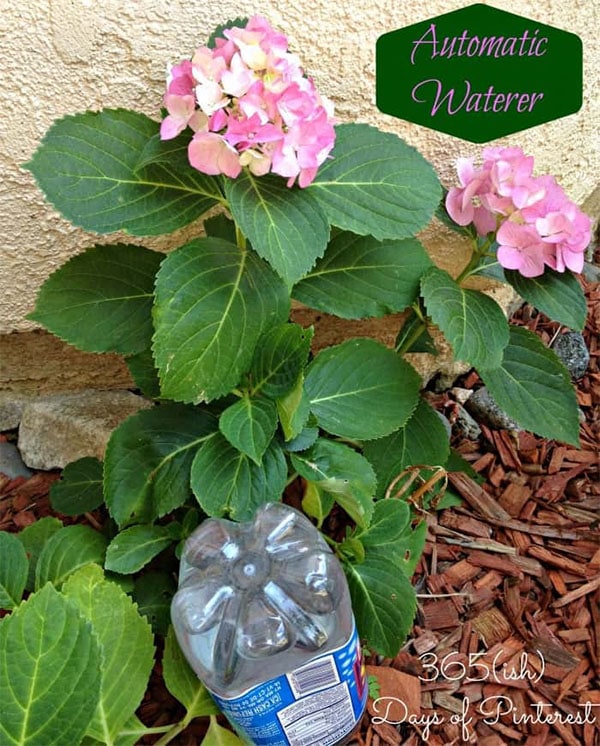
| Materials: | Plastic water bottle with cap |
| Tools: | Hole punch |
| Difficulty Level: | Easy |
Do you have a water bottle you’ve just emptied into your belly? If so, you have almost everything you need to make this DIY watering globe for free with these free plans from Simple & Seasonal. This watering globe couldn’t be easier! Simply punch a few small holes into the bottle’s cap, fill the bottle, and put the cap (with holes) back on. Then, place the bottle cap side down into whatever plant you wish to water.
9. Free DIY Wine Bottle Watering Globe by JoFer Interiors SMP
| Materials: | Wine bottle, cork |
| Tools: | Drill and a small bit |
| Difficulty Level: | Easy |
If you’re a fan of vino, this DIY watering globe will be a treat! It uses an empty wine bottle and its cork, so don’t throw the cork away after opening it. All you need to do is clean the bottle thoroughly, then, using a drill, drill a small hole through the bottle’s cork. That’s where the water will slowly drip out. Any wine bottle will do, and for even more fun, you can leave the label on and show off your oenophile escapades!
 When to Use Your DIY Watering Globe
When to Use Your DIY Watering Globe
Once you have made your DIY watering globe, it’s important that you use it correctly. Although the final result will cause a self-fulfilled watering system, not all plants thrive with this technology.
Plants that need consistently moist water pair best with watering globes. Vegetation, perennials, and tropical plants, for example, fare the best. Plants that need marshy water or dry soil, in comparison, do not thrive with watering globes since watering globes do not provide the right amount of water for their needs.
If you find plants that work well with your DIY watering globe, you can use the watering globe 24/7. You can also simply use this whenever you go out of town to ensure that your plants stay watered during the process.
Final Thoughts
Now that you have five great plans for making a watering globe at home, you don’t have to waste your money on an expensive glass-blown model.
Instead, you can turn an old plastic bottle into a watering globe for a convenient option, or you can turn an old wine bottle into a globe for an option that is both functional and attractive.
You Might Also Be Interested In:
Featured Image Credit: Jakkrapong Waree, Shutterstock
Contents

 When to Use Your DIY Watering Globe
When to Use Your DIY Watering Globe
